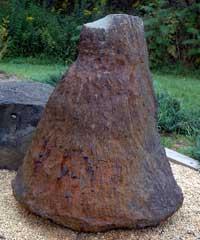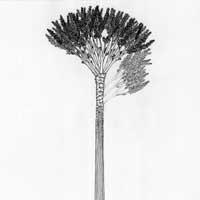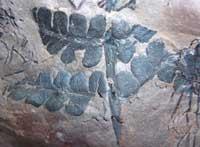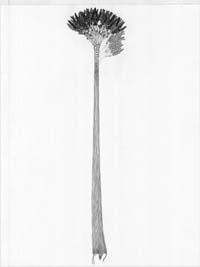Paleobasos, fossil remains of ancient ecosystems
2007/05/13 Rementeria Argote, Nagore - Elhuyar Zientziaren Komunikazioa
Pieces of the puzzle

The forest of Gilboa is very popular for lovers of paleobotany. New York is in the state and was discovered in 1870 in a quarry. They are basically fossils of tree feet three hundred and eighty million years ago. These trees, called Wattieza, receive the scientific name of Eospermatopteris.
That discovery was enormous. Yes, as they only had the feet of the tree, they knew more or less how the trunk was, but they had no footprint of the cup. This fact aroused the curiosity of many paleontologists. Among other things, many friends from the area of Gilboa have worked in paleontology, like the Mannolini brothers. His sister Sharon worked as a paleontologist for the Museum of the State of New York and, when he died, it was his brother Frank who occupied his post and his passion for those trees. Well, the latter has participated in another great discovery that has been carried out in the area of Gilboa, where in 2004 a complete copy of Wattieza was found, less than 16 kilometers from the forest of Gilboa.

In the end they know what the cup of the Wattieza tree was, formed by extensive flat leaves like the fern or some palm trees. (Picture: F. F. Mannolini, New York State Museum)
Of course, at first glance they did not know what they had in their hands. It was a great job to remove the fossil, cut, collected and carried to the museum a huge rot of 180 kilos. Once properly analyzed, the conclusion has been published. This great fossil is a Wattieza of nine meters of height, which finally has the cup of the tree, formed by wide flat branches, like ferns or some current palms.
In addition, thanks to this fossil, they have realized that they have already found fossils of the tree of this species, which were without trunks and believed that it was another plant species. So they have realized that some of the fossils they had so far were pieces of the same puzzle.
A forest in the mine
Another of the most spectacular discoveries that have been given in the world of paleobotany. In fact, they have discovered in Illinois a spectacular forest about three hundred million years ago. It is the largest fossil forest ever seen, with an extension of ten hectares and which has been found in a coal mine. Once the coal has been removed, the fossils of trees and plants of a forest have been discovered on the walls of the mine.

Thus, researchers are fascinated by the discovery. They say they have a great opportunity to see the fossils, as they just have to get into a special car and travel the mine tunnels to see and catalog the fossils there. They say there are remnants of vegetation of all kinds: mosses, tree ferns, giant foxes tails, shrubs...
Both the discovery of this forest and that of that tree of Wattieza will help to know better the Earth of millions of years ago: what ecosystems there were and how these ecosystems affected the Earth itself, reducing carbon dioxide, for example.
Published in 7K.

Gai honi buruzko eduki gehiago
Elhuyarrek garatutako teknologia






